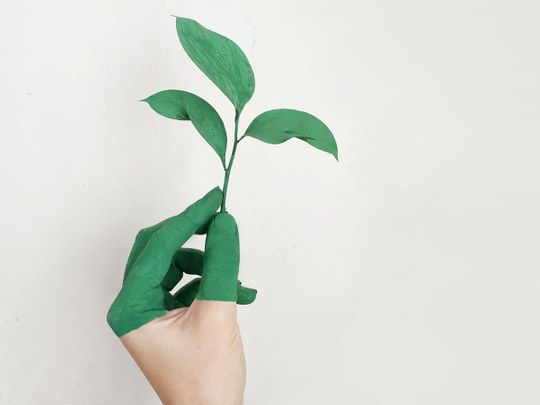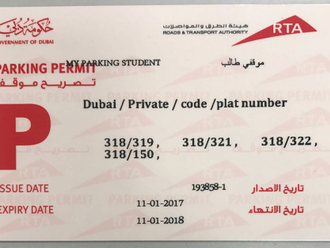
Whether you want to grow a single trailing vine, a luscious leafy monstera or some herbs, fruits or vegetables that you can use in your spring and summer cooking, this is the perfect time to get into indoor planting. Even if you don't have a green thumb.
"There's a plant for everyone," said Sara Gatanas, who helps customers with their plants at the Urban Garden Center in New York's Harlem neighborhood. "Even if you're new to gardening, there's a plant that suits you."
Here are some tips to help you find plants that have potential to thrive in your space and to keep them growing - or, at least, alive.
You can buy plants from local stores - many are offering contactless delivery during quarantine, at hardware stores like The Home Depot and Lowe's, or from online marketplaces like Etsy. Stores that sell plants also typically have everything else you'll need, like planters and pots, soil and fertilizer. You can also propagate a plant with a cutting from a neighbor, friend or family member.
The Dummies website has a useful guide to propagating plants from cuttings. All you need to start is a cutting, a water bottle or other clear container filled with water.
The first step to becoming a successful plant parent is being honest with yourself about what kind of light you have and how much time you're willing to spend caring for your plants, said Erin Marino, director of marketing at the Sill, a store that sells plants and stylish ceramic planters for (mostly millennial) apartment dwellers.
One advantage to being home all day is that you can take the time to observe your lighting and see what happens as the day progresses. If you stand in front of a window and feel the heat after a few minutes, you have bright direct light. If you have the kind of reflective light that makes your space feel bright, but you can't directly feel the sun beating on you, but around noon you can turn off your lights and the space is still well lit, you have medium light. If the light inside your home feels as if you're sitting under a shady tree or if you need a light on during the day, then you have low light. But a rule of thumb: If you have a window, even if it's tiny, you can have a plant.
Most indoor plants don't like being in direct sunshine because they can burn there, so take that into consideration when you place them.
Some good starter plants are: pothos (a kind of ivy), snake plants, anthuriums, spider plants, peace lilies, heart-shaped philodendrons, and succulents and cactuses. The pothos and peace lily, for example, will tell you if they are struggling by wilting. If you water them, they will perk up within hours.
If you have a pet, you should see if the plant you are buying is toxic or not.
If you're growing herbs or anything else you plan to eat or use on your body, Gatanas suggests buying organic soil that hasn't had chemicals added to it. Edibles like basil, mint and strawberries will also grow just fine in a soil mix used for other plants. But remember that herbs require a lot of light.
When you buy a plant, it will probably come in a plastic grower's pot with drainage holes at the bottom. Most of the time the plant has almost overgrown its pot, so it's worth moving it into a more decorative pot (for a single plant) or planter (for multiple plants). Popular ones are made of terra-cotta or ceramic, but they can be pricey, so you can use old containers around the house like old candle jars or Mason jars and drill holes in them for drainage or use one of the methods below for draining.
"If you know you kill everything, go for a planter with a saucer and drainage hole," Marino said. "But if you know you're a mindful waterer, don't worry about a pot without drainage holes."
If you opt for a pot without drainage holes, you can line the bottom with small rocks to create crevices for the extra water to drain into.
You'll want a planter or pot that's the same size or an inch or two larger than the plant. Although putting a plant in an extra-large pot so you don't have to move it might seem like a good idea, it's not. If there's too much space and soil, you'll overwater it, and that will cause the root system to swim in the soil.
Over time, you should repot your plants, but sizing up should be a gradual process.
If your plant's leaves are turning yellow, it's most likely suffering moisture stress. To figure out if you are over- or under watering, touch the soil. If it's wet and you've been watering a lot, your plant is overwatered. If the soil is dry to the touch and you've been watering sparingly, it's under watered.
The fix is pretty simple: Tweak your watering schedule and either water more frequently or less frequently than you have been. If you need some help on this front, try a moisture meter. It can show you how moist the soil is.
If you adjust your watering schedule, but the leaves remain yellow, your plant might have root rot, an "illness" that occurs when a plant has been overwatered for a long period of time or if there's a fungus in the soil.
If a plant's leaves or the tips of the leaves are turning brown, you're probably not watering it thoroughly. You could be watering the surface or top inches of the soil but not giving it enough to penetrate to the roots. Make sure when you water a plant, the water goes through the drainage holes at the bottom of the planter or into the rocks in the bottom of the pot. (To check in the latter case, you can stick your finger in the soil to feel if the soil is moist, or use a moisture meter.) A browning plant may also need some additional humidity, so try leaving it for a few days in the bathroom where you shower or spritzing it with a spray bottle.
"Most plants don't want to just sit in water, so you're better off doing a thorough watering less often, instead of watering a little bit all the time," Gatanas said.
And don't forget to talk to your plants. They like that.






